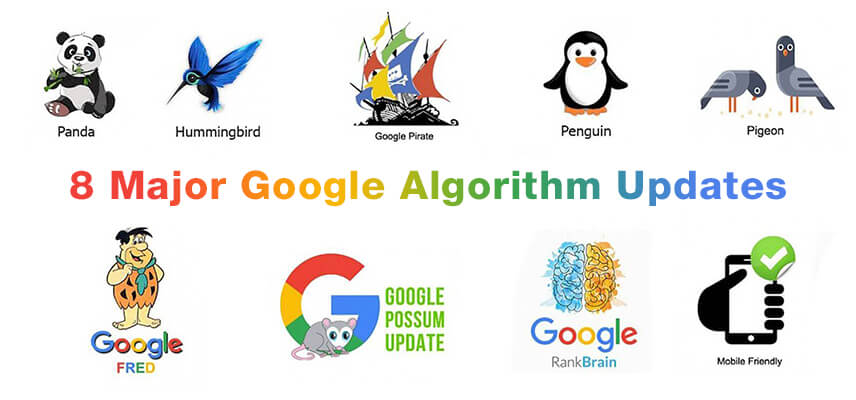

Essential Content Strategy Elements
The term “content marketing” is often thrown about nowadays, but it’s more than just a passing fad; it’s also one of the most efficient and cost-effective methods of building and sustaining connections with current and potential clients.
When done correctly, content marketing services may enhance website and blog traffic, social following, and brand exposure among the intended audience. Yet, only a small fraction of marketers are happy with the outcomes of their current content marketing approach.
What exactly does an inbound marketer need to pay attention to before beginning to put up an actual strategy?
The 7 pillars of a successful content marketing plan
1. Consistently characterized target audience
The first step in developing an effective inbound strategy is identifying the specific customers or clients your company intends to serve. Some things to consider when creating a customer persona are the state of the market, the target demographics, the solutions provided by your product or service, the types of people most likely to use it, the types of people who can afford it, and the sales triggers that will cause them to make a purchase.
Having a clear picture of your target audience’s characteristics like interests, values, and problems is essential. You can then use this information to develop a unique approach to advertising that speaks directly to your target audience and solves their problems.
However, the consumer persona must be regularly updated due to the rapid pace at which market requirements and digital innovations evolve. The time and effort put into a survey or study might mean losing out on a lucrative business opportunity. Here is where marketers need to learn to take advantage of new technology.
2. A well-thought-out plan for producing material
In its whole, a marketer’s content strategy is defined by the next strategic move that must be taken. Also, no, this doesn’t entail writing a blog or participating in social media (though these are components).
Market research, figuring out what kinds of content you can create or curate, figuring out what kinds of content your target audience is engaging in, finding the best platforms to share and promote it, and making sure the content pieces can add value to the overall business marketing objectives are all essential steps in developing a well defined content marketing strategy.
Many businesses make the error of treating their content strategy as if it were independent of their social media, advertising, and offline marketing efforts. However, the secret to success is in developing a plan that, when put into action, complements the company’s existing initiatives.
3. Consistently excellent and reliable content
The next step after developing a content strategy is to put it into action. Consistent work over a certain time period is required for any content marketing plan to bear fruit.
Unfortunately, in their haste to put their content strategy into action, most marketers end up producing low-quality work. The reality, however, is that today’s hyper-informed youth is only interested in content that either expands their knowledge or improves their quality of life.
What this implies is that every month, the marketer must not only meet the goals they’ve set for themselves, but also maintain a certain level of “quality” in the material they provide. Information, interest, entertainment, relevance, and context must all be there or you risk losing a potential customer to a rival.
Blogs, social sharing, newsletters, email marketing campaigns, and other marketing collaterals developed should all be in harmony with the image your company wants to project and the interests of the people to whom it is trying to sell its products or services.
4. Statistics and Reporting
Many marketers overlook the importance of tracking the reach and engagement of their content across all of the digital platforms that they plan to use. As a consequence, they have no notion of what is “really functioning” and where they may save money.
An important part of any content marketing plan is tracking how readers react to each piece of material. You can learn a lot about your content’s performance by analyzing data collected by tools like Google Analytics, such as the number of page views, the source of traffic, the bounce rate, the devices used to access the content, the number of inbound links created, the percentage of returning visitors, the percentage of new visitors, and much more.
If you require a different kind of analytics solution, you should check about. But before you start creating content, you should make a list of the most critical KPIs for your content strategy, such as the kind of outcomes you want to achieve, the volume of traffic you anticipate, and the types of user interactions you envision.
The ability to measure the right things is essential for staying focused on the end goal. Data analytics platforms can provide an overwhelming amount of information, making it difficult for marketers to extract useful insights.
5. Optimization that is always performed
Content marketing companies invest heavily in creating and redefining digital marketing strategies to meet the ever-changing demands of the market. Contrarily, most content marketing strategies are not optimized; rather, they are developed and then abandoned if they are unsuccessful. Additionally, some companies’ strategies explicitly exclude content marketing.
To get the best results, content marketing, like any other kind of advertising, needs constant tracking and tweaking. Marketers should learn to make use of historical data in conjunction with current market data to enhance existing plans rather than starting from scratch each time.
This not only aids in time savings, but also in the effective administration of other resources, such as marketing money.
6. Customer Experience Roadmap
It’s impossible for all of the content you publish to have the same impact on your target clients since they are at various points in their journey and need different information. Each potential customer’s journey with your brand will have its own unique arc, and you should approach the journey map from their perspective.
Traditional marketing funnels, classic path-to-purchase models, and customer journey maps are not necessarily linear when overlays and new dimensions are added. A customer’s journey through your sales funnel may include them engaging with some of your channels and touchpoints while ignoring others for a variety of reasons.
Your customer journey map has to reflect your unique client persona and the channels you use to engage with your audience. By addressing their issue in this manner, you’ll win over their business permanently.
7. Backing Tale
There is always a backstory to every issue and its resolution, and it is these tales that will endear your brand to its target audience. Having a brand’s backstory is crucial since it informs all of your material. It’s crucial that you always put our clients first and craft your narratives from their vantage point.
Fundamentally, your narrative should centre on the goals and desires of your target audience while also addressing any issues they may have.
You can’t just write a blog post telling your brand story and expect people to remember it. Every element of company content you produce should convey your brand’s narrative.
Timelines for accomplishing predetermined company goals are laid out in detail by a solid content strategy. Periodically assessing what is working and what activities require a course correction is a part of this process. An efficient marketing plan is one that can be adapted to meet the needs of the market at any given time.
Conclusion
Review these 7 components of a successful content strategy and give some thought to each of the points made. Which do you consider the most important to your company’s success? Is your content strategy complete with these components?
Which of these have you not given much consideration to? Take some time to think and examine. Then, give each suggestion a shot in your content advertising plan and see the effects on your lead generation, brand recognition, click-through rate, etc.
It’s tempting to just click away in today’s fast-paced digital world. There is a wealth of data at your fingertips that may catalyze your company’s meteoric rise to the top.
Content marketing consultants and professionals at SEO Company Expert collaborate with you to improve your company’s visibility online. They know what they’re doing and have the resources to increase traffic to your site and the number of leads it generates for your company.






